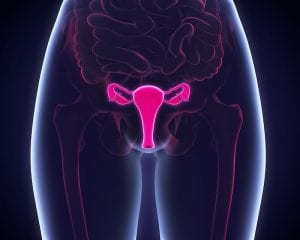Cervical health might play a vital role in a woman’s fertility levels.
Cervical Location and Function
This structure connects a woman’s vagina and uterus. The cervix holds several crucial functions. During a menstrual cycle, the structure produces and secretes a mucous-like substance designed to aid in conception. When the childbirth process occurs, the cervix opens, enabling the baby to pass.
Issues Impacting Cervical Health
There are numerous medical conditions that may impact the cervix’s well-being. Any such malady might negatively influence fertility rates. Some have the potential to cause serious health problems:
Cervicitis
This ailment is a bacterial infection of the cervical region, which is usually accompanied by a milky discharge, and slight bleeding when touching the cervix and/or urinary tract infection.
Polyps
Polyps are small non-cancerous growths that accumulate along the cervix’s lining. Should these anomalies grow large enough, they can impede sperm’s ability to penetrate the uterus.
Dysplasia
Dysplasia is the growth of abnormal cells within the cervical region. Though these abnormal cells are non-malignant, this condition may be a precursor for the eventual development of cervical cancer.
Eversion
The cervix is divided into two sections: the internal endocervical canal (endocervix) and the outer portion known as the ectocervix. Eversion occurs when cells located within the endocervix travel to the ectocervix. This abnormal occurrence may increase the risk for infection and could precipitate a potentially serious condition called cervical erosion.
Sexually Transmitted Diseases (STDs)
Various ailments that are transferred through sexual contact can have an adverse impact upon the cervix and potentially threaten a woman’s ability to conceive. Of particular concern is the Human Papillomavirus (HPV), which has been medically linked to various forms of cervical cancer.
Cancer
The most serious of all cervical disorders, cancer, occurs when cervical cells become malignant and multiply rapidly. Cervical malignancies may not only impact the possibility of conception but also pose a significant risk to a woman’s health and life.
Symptoms of Cervical Ailments

Unusual Bleeding
Vaginal bleeding that occurs before or after a menstrual period or excessive bleeding during a menstrual cycle could indicate a cervical problem.
Vaginal Discomfort
Several cervical disorders have the potential to precipitate vaginal issues such as dryness, burning and pain. These manifestations might also occur during sex, making intercourse unpleasant.
Vaginal Discharge
Vaginal excretion of unusual or unexpected liquids or substances might indicate a cervical illness.
Other Symptoms
In certain instances, such as infection or a spreading malignancy, other organs could also be impacted. Therefore, symptoms such as back and abdominal pain or changes in urinary habits may occur.
Prevention and Fertility-Protecting Treatment Options
Prevention
The key to avoiding or curtailing specific cervical maladies is prevention. Women can employ several preventive steps:
Obtaining Routine Checkups
All women, especially those of child-bearing age, are encouraged to receive relatively frequent (at least once a year) medical checkups.
Receive Pap Smear and HPV Tests
A healthcare professional performs these examinations by inserting a cell-collecting tool inside the cervix. Once the sample is collected, it is brought to a lab and analyzed for any abnormalities.
Obtain an HPV Vaccination
If tests conclude no presence of HPV, women are encouraged to receive the inoculation known as Gardasil. Medical studies have shown that these administrations, which are often given to girls and young women, have been effective in preventing specific strains of HPV that have been known to precipitate the onset of cervical cancer.
Engage in Safe Sex
The use of condoms and contraceptives decrease a woman’s chances of becoming infected with STDs.
Treatment Options
The following treatment options might be prescribed or employed for women stricken with a cervical issue:
Antibiotics/Antifungal Preparations
The presence of infection or various STDs could be treated with these drugs. Antibiotics are used against bacteria and trichomonads, and antifungals against vaginal thrush. These drugs are usually taken in tablet form.
Surgical Procedures
Procedures like cauterization (the elimination of diseased tissue with heat) or cryosurgery (the elimination of abnormal tissue with liquid nitrogen) might be indicated in the presence of severe or a deeply situated infection, eversion and polyps. Surgical intervention might only be necessary in the presence of cancer. However, the severity and location of the malignancy may also require other therapeutic protocols, such as chemotherapy or radiation.




